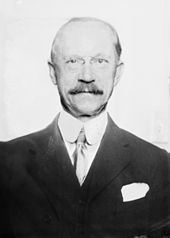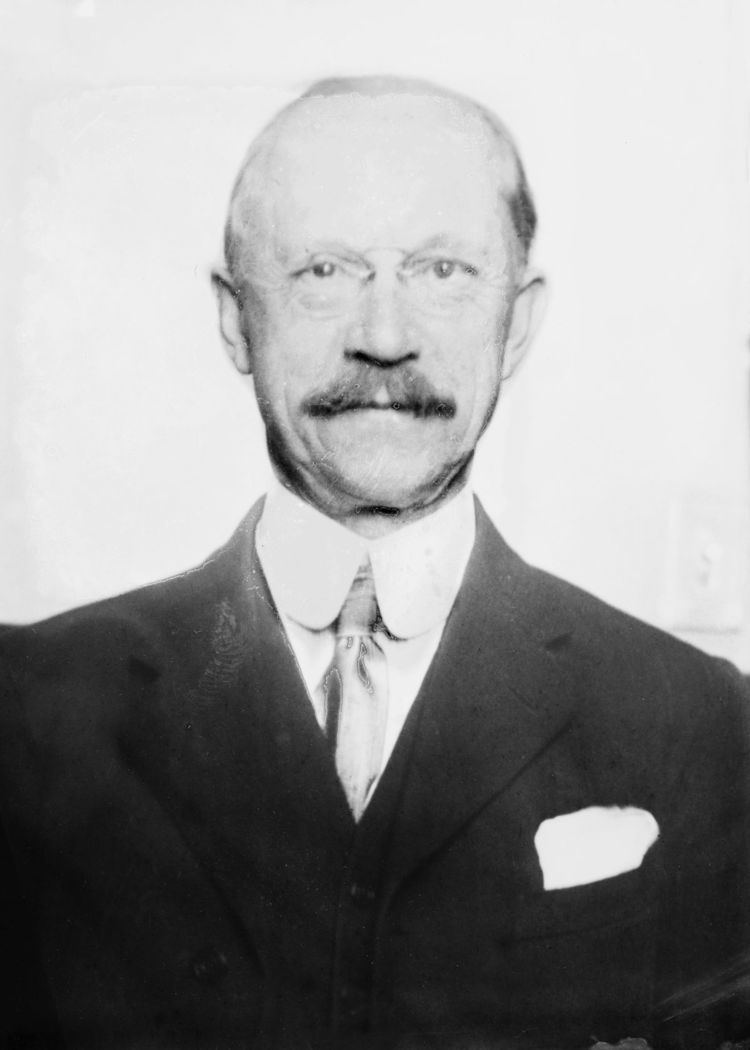Name Charles Pratt | ||
 | ||
Died 1935, Glen Cove, New York, United States | ||
Charles Millard Pratt (November 2, 1855 – November 27, 1935) was an American oil industrialist, educator, and philanthropist. As the eldest son of industrialist Charles Pratt, In 1875 he began working at Charles Pratt and Company, soon becoming president. He was a director of the Standard Oil Company and later a president of the Pratt Institute in Brooklyn. He donated large sums to Vassar College and Amherst College, among other institutions.
Contents

Early life and education

Pratt was born on November 2, 1855 in Brooklyn. He was raised on the Pratt family estate at 232 Clinton Hill, Brooklyn, the eldest son of Charles Pratt and Lydia A. Richardson. He was the elder half-brother to Frederic B. Pratt, George Dupont Pratt, Herbert L. Pratt, John Teele Pratt and Harold I. Pratt. He graduated from Adelphi Academy in 1875 and from Amherst College in the class of 1879. In 1880 at the age of 24, he was living in Clinton Hill with his seven younger siblings. He was awarded an honorary degree from Yale University in 1903.
Career
In 1875 he began his business career at Charles Pratt & Co, a financial firm started by his father. He later became its president. Pratt joined Standard Oil in 1879. He was a director and secretary at Standard Oil from 1899 to 1911, and treasurer from 1908 to 1911. For years he was also president of the Pratt Institute, contributing greatly to its endowment.
For a time he was a vice president of The Long Island Railroad, and a director in other companies such as the Brooklyn City Railroad and American Express. In March 1900, he was re-elected a director of the United States Mortgage and Trust Company, to serve three years. Prior to 1923, he was a trustee of the Atlantic Mutual Insurance Company, president and director of The Thrift, and director of the Union Mortgage Company, Chelseai Fibre Mills, Hoagland Laboratories, Pratt & Lambert, Self-Winding Clock Company, and others.
In 1923, Justice Stephen Calaghan of the Kings Country Supreme Court confirmed “findings of a special sheriff’s jury” that Pratt was unable to conduct his business due to his age. His sons Richardson and Theodore, as well as his wife, were named a committee of the person to represent him. He had been ill six months, at age 68.
Philanthropy
He was president of the Pratt Institute’s board of trustees, as well for a time of the Adelphi Academy. He was a trustee of Amherst College and Vassar College. He was a director of the Brooklyn Bureau of Charities and other charitable entities.
He personally contributed funds to Adelphi Academy, Emmanuel Baptist Church in Brooklyn, and Amherst and Vassar. For example, as a trustee of Vassar from 1908 and 19021, he contributed more than $800,000, including the college’s outdoor theatre, artificial lake, and landscape gardens, which the New York Times stated “made its campus famous throughout the country.” Pratt House at Vassar, a residence for the Warden, was completed in 1915 by architects York and Sawyer. Pratt also contributed to the endowment and the building of structures at the Pratt Institute, and in 1910, he and his five brothers and one sister gave $1,750,000 to the institute.
As a trustee of Amherst from 1897 and 1921, he contributed funds for a gymnasium, dormitory, and other buildings. He was the first alumnus to donate a building to Amherst College—the Pratt Gymnasium was erected in 1883, and was reconstructed as the Pratt Museum in 1942. Following further rebuilding, it reopened in August 2007 as the Charles M. Pratt Dormitory. Pratt was also responsible for the Morris Pratt Dormitory at Amherst College in 1911, in memory of his son Morris who died at Amherst while an undergraduate student.
Personal life
He was married to Mary Seamoor Morris Pratt, daughter of Governor of Connecticut Luzon B. Morris, on May 8, 1994. He and Mary Seymour Morris had five children:
Pratt was a member of the Alpha Delta Phi Fraternity, and the Nassau Country Club at the time of his death in 1935. He had previously belonged to the New York Yacht Club, The Nineteenth Century Club, the Brooklyn Club, and Hamilton Club, and the Montauk Club.
Death and aftermath
He died on November 26, 1935 in Glen Cove, New York, at his Seamoor country estate. He had been ailing for ten years, with his condition becoming serious in January 1935 after his brother George Dupont Pratt died. Charles Pratt was survived by his widow, his sons Richardson and Theodore Pratt, a daughter Mrs. Burton Parker Twitchell, and three brothers and his sister. Private funeral rites were held at his Seamoor estate in Glen Cove, under a reverend of the Central Congregational Church of Brooklyn.
Upon his death, his estate left $150,000 to educational and religious institutions. His will granted much of his estate to his widow and three children, with funds also to Pratt Institute, Vassar College, Amherst College, Emmanuel Baptist Church of Brooklyn, and the Brooklyn Bureau of Charities. Funds also went to the International Committee of the Young Men’s Christian Association, as well as Pomona College, and the Presbyterian Church of Glen Cove, L.I.
A report filed with Kings County valued the C. M. Pratt estate at a net value of $20,004,812, it was reported in June 1938. Gross estate was $22,181,006. His widow and children were to share in the property, which was primarily in stocks and bonds. A state tax of $3,305,062 was levied against the property, with the Federal tax more.
His widow died on October 24, 1947 at her home in Seamoor.
Estates
He had a number of estates designed. William Tubby designed the Charles Millard Pratt House at 241 Clinton Avenue, Clinton Hill, Brooklyn in 1893. Located in Brooklyn’s Clinton Hill Historic District on a 2,000-acre estate, it is one of the city’s finest examples of Romanesque revival architecture, and is now the home of the Roman Catholic Bishop of Brooklyn. Between 1921 and his death in 1935 he spent "practically all his time" at 241 Clinton Avenue.
He also spent time at his estates outside of Brooklyn. Pratt had a winter home, also known as Charles M. Pratt House, designed by architects Greene and Greene in Ojai, California and completed in 1909. The winter bungalow was on a 54 acre estate as of 2001. Architectural Digest called it an “American masterpiece.”
In 1923 he was said to be living at his summer place in Glen Cove, Long Island. Pratt's large estate at Glen Cove, Seamoor, was designed by the New York firm of Lamb & Rich. In 1903 a barn on the property burned down, killing 12 horses, with Pratt saying the losses were covered by insurance. By October 1930, the property’s assessed valuation was around $7 million. The Pratt estate included the homes of nine members of the family: among them himself, Representative Ruth Baker Pratt, Harold I. Pratt, Herbert L. Pratt, Charles Pratt, Frederic B. Pratt, George D. Pratt, F. L. Babbett and Helen P. Emmetto.
